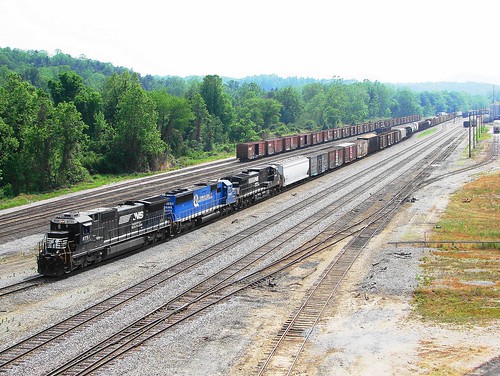Globesity: How climate change and obesity draw from the same roots
(Source: Grist.org via T4America)
You’ve heard all the reasons before: We drive too much. We eat too much meat and processed food. We spend too much time with plugged-in devices—computers, TVs, air conditioners.
But what problem are we talking about—climate change, or the worldwide rise in obesity?
Both, according to Globesity: A Planet Out of Control?, a book by four public-health researchers who show how climate change and obesity draw from a shared web of roots. Both problems worsen as car culture spreads, desk jobs replace manual jobs, and carbon-intensive foods (including meat) become available to more and more eaters, according to the book, published first in French and this spring in English.
The two issues spread across the planet in similar ways. Those paying attention to climate change know the planet can’t afford for the developing world to emit carbon dioxide at the same levels as the industrialized world. Public-health workers, too, foresee enormous trouble if developing countries adopt the worst dietary and lifestyle habits of rich countries. That shift is well underway, according to Michelle Holdsworth, Globesity’s lead author and a nutritionist with the World Health Organization (WHO) in Montpellier, France.
Rates of obesity—defined by the WHO as a body mass index of 30 or higher—are now higher in Germany, Finland, and the Czech Republic than in the U.S., according to data from the International Obesity Task Force (IOTF). The same is true in some Mediterranean countries famed for their healthy diets: Greece, Egypt, and Cyprus. Traditional olive oil-centric diets have become too high in fat for populations that are less active than they used to be, said Holdsworth. And traditional diets are losing ground.
Even more disturbing is the rise in childhood obesity. Again, America was a trailblazer, and again, much of the world is catching up quickly. Childhood obesity rates doubled in the U.S. from 1975 (15 percent) to 1995 (30 percent), according to the IOTF. England’s childhood obesity rate caught up in half the time, from 15 percent in 1995 to 30 percent in 2005. More from the book: “Mediterranean countries are among the worse hit, so that in Spain, Italy, Albania or Greece, we find the numbers of overweight children already climbing to between 30 and 40 percent.”
Globesity‘s message is somewhat at odds with research published in April that concludes overweight people, by requiring more food and energy to transport, produce more greenhouse gases. “Moving about in a heavy body is like driving in a gas guzzler,” one of the two London School of Hygiene & Tropical Medicine authors told the U.K. Sun, which ran the thoroughly lame headline “Fatties Cause Global Warming.”
So here’s some good news: The problems of obesity and climate change may be connected, but so are many solutions. Rethinking neighborhoods to encourage bicycling and walking (and walking school buses), for example, would help on both fronts. Junk food requires more energy to produce than healthy food, so “junk food taxes,” limits on advertising to children, and clear labeling standards would also help both problems. Simply cutting subsidies that give a cost advantage to junk-food staples like corn syrup could do a great deal. But that requires political courage.
Click here to read the entire article.











